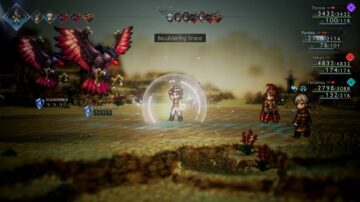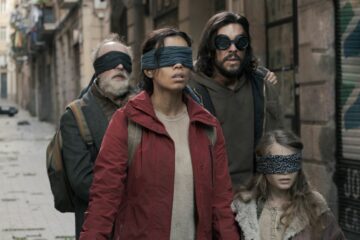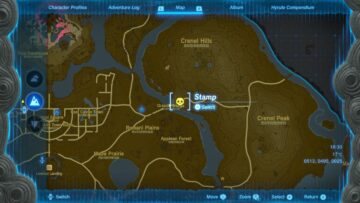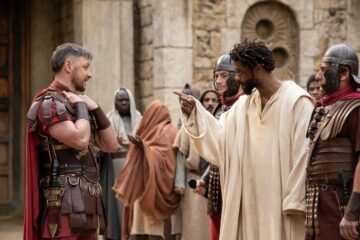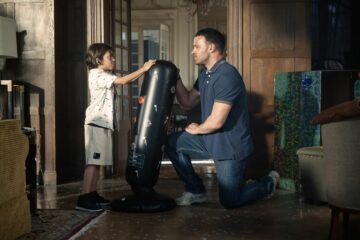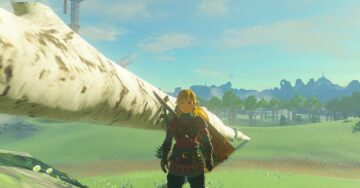For a game of Dungeons & Dragons you really only need a few things: some dice, the barest idea of a possible encounter, and a few other people with characters in-hand. So when I’m coming to the game’s publisher, Wizards of the Coast, for one of their campaigns I’m expecting quite a lot for my dollar — an excellent hook, for starters, but also a lengthy experience with lots of extras to pull my players in.
Vecna: Eve of Ruin, the last adventure to be published for the original 5th edition ruleset, is chock full of those kinds of extras, and the best bits by far are the maps.
D&D’s earliest adventures were little more than maps, carefully annotated on loose-leaf graph paper in three-ring binders by the likes of Dave Arneson, Gary Gygax, and a handful of the game’s original designers and artists. They were strictly two-dimensional affairs, presented from a bird’s eye view. Case in point is the infamous Tomb of Horrors, a deadly yet concise arena originally created for tournament-style play. It’s an elaborate series of hallways and antechambers, most of which exist on the exact same level of the dungeon.
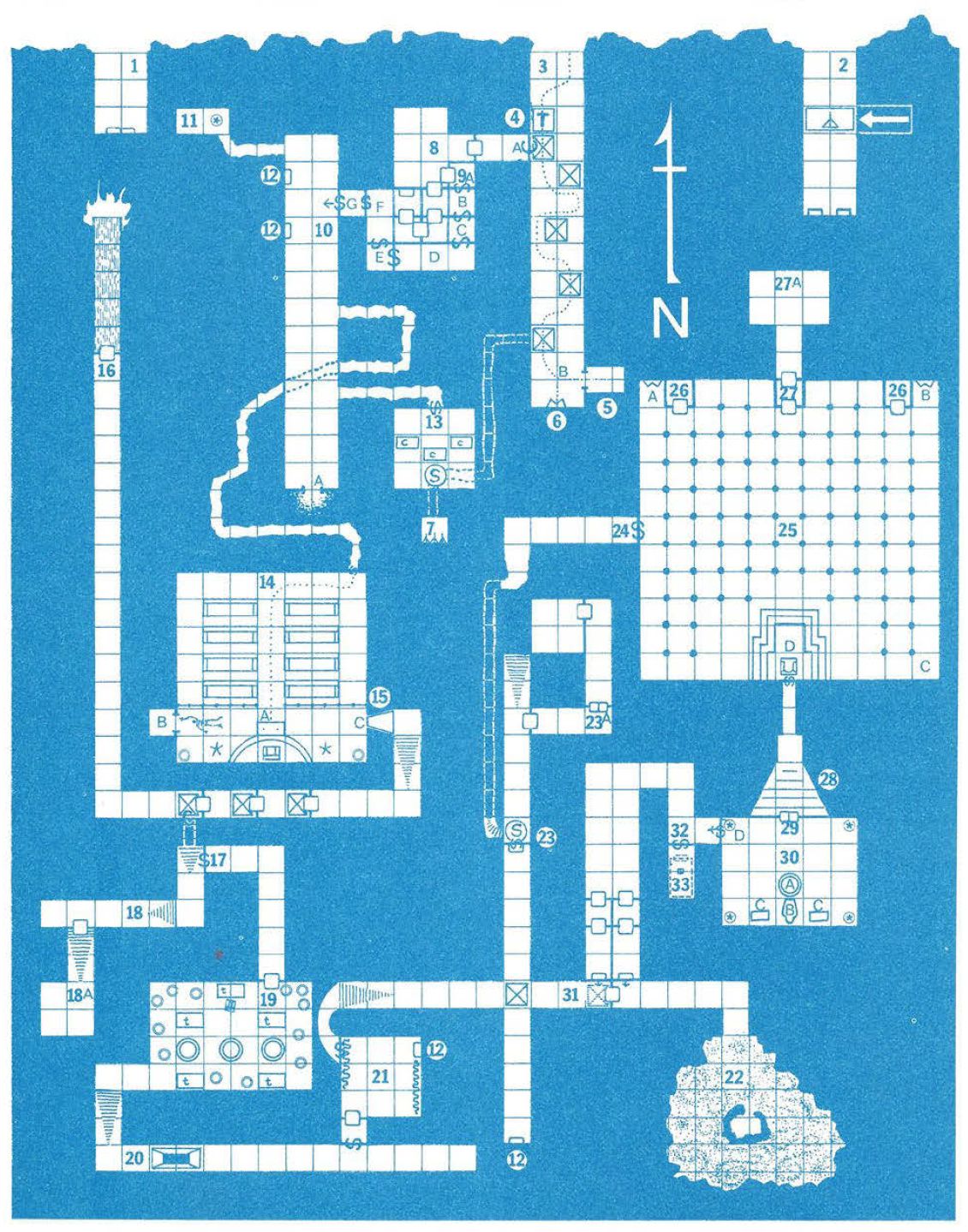
Vecna: Eve of Ruin’s maps are designed in a very similar way, but they are anything but flat.
[Ed. note: This story will spoil key elements in Vecna: Eve of Ruin.]
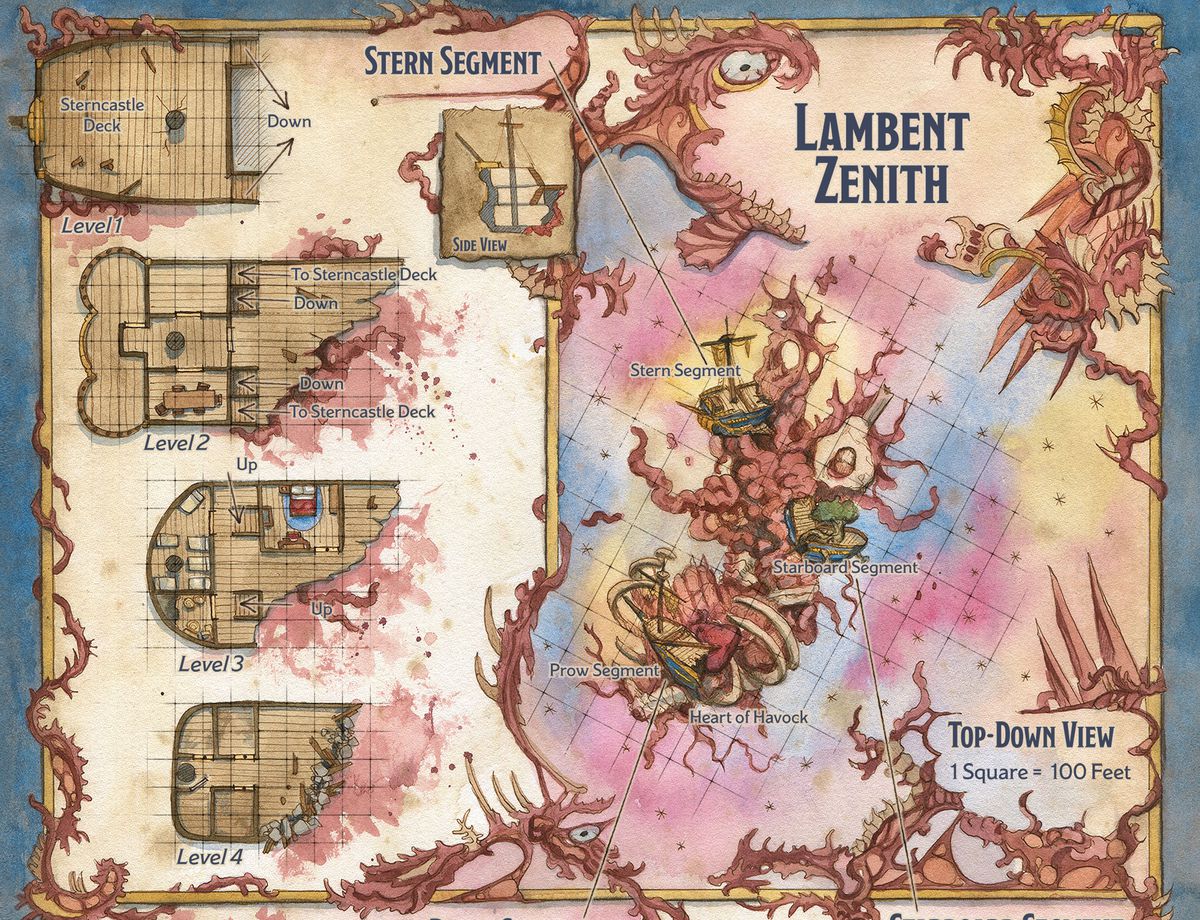
Take, for instance, the map in chapter three titled “The Lambent Zenith’s Last Voyage.” Created by cartographer Francesca Baerald, it depicts a magical sailing ship that has crashed into the side of a dead god. Here’s the official description, a version of which is what they likely had to work with on the commission:
The stony mass isn’t a planet or an asteroid, but a colossal creature that appears lifeless. Shattered ribs arch over the creature’s mossy spine, and the air crackles with decaying magic.
Among the bones is the shipwreck of a large galleon broken into three large chunks: the sterncastle, nestled in the corpse’s hip bones; the starboard section, embedded in the ribcage; and the prow, stabbed into the creatures’ heart.
To help that description make sense visually for the player, Baerald created an elevation view that details in broad strokes where each piece of the ship is located relative to the others. You can see it on the right side of the map above. But each piece is itself resting against and, in some places, inside the dead god in a different way. So each of the galleon’s three pieces gets its own cross section for added clarity.
These are the kinds of details that add immersion to an already excellent campaign. They also increase the value of the game’s digital version, available exclusively on D&D Beyond. With it you have access to a high-resolution version of the map — a 61.6 megabyte JPG file, rendered at 72 pixels-per-inch. It’s enough detail that the texture of Baerald’s individual watercolor brushstrokes help to enhance the experience. All you need to do is print it out at the local copy shop.
Of course, you can also support Baerald directly through her website, which includes a link to where you can buy more of her work online. That includes maps from the recent Planescape and Dragonlance reboots.
While Baerald’s full-color maps in Vecna: Eve of Ruin are real showstoppers, cartographer Dyson Logos’ work is far more plentiful and no less complex. My favorite comes in chapter four, “The Ruined Colossus.” It depicts a massive bipedal war machine, as big as anything from the world of Warhammer 40,000, that has become fully entrapped inside a mountain. To emphasize the adventure’s goals, there’s even a delicate stream of cerebral fluids dripping down in rivulets through the entire structure — like breadcrumbs left behind by wayward children.
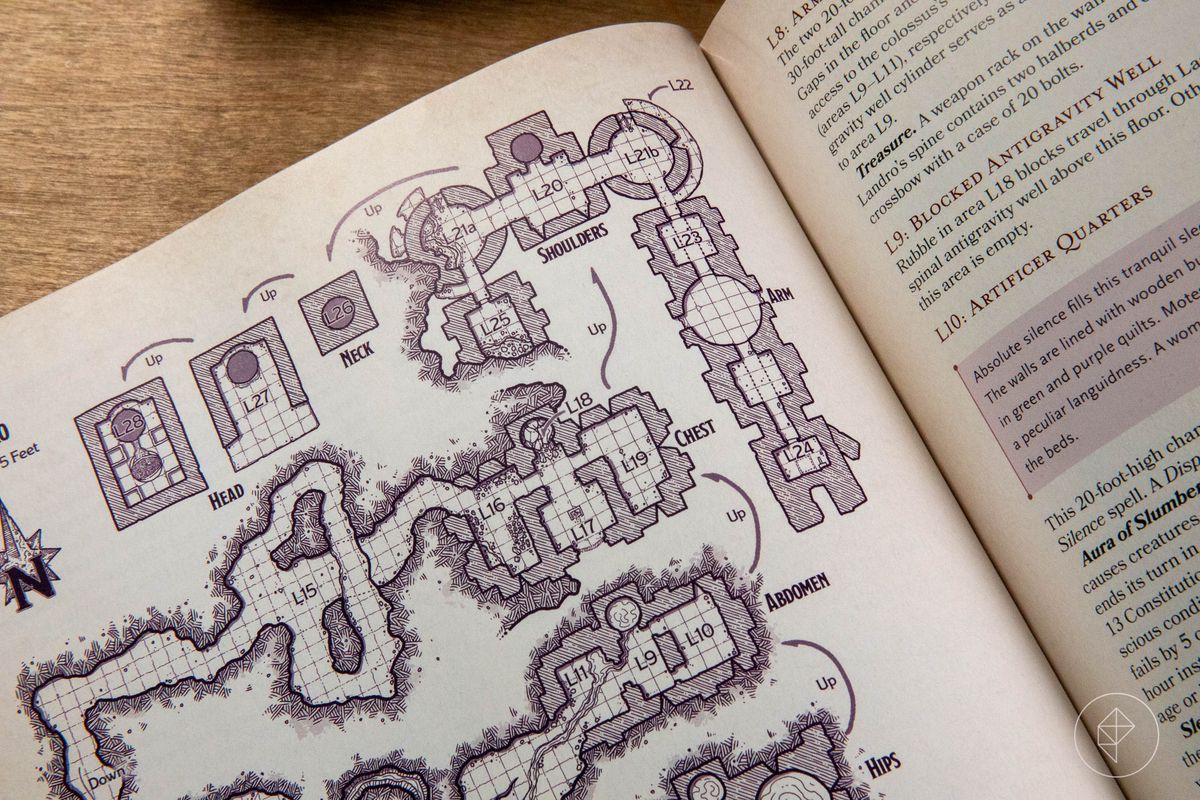
Vecna: Eve of Ruin, D&D
Logos uses jaunty arrows to show how the different segments of the colossus are connected, and he likewise includes an elevation view to help characters get their bearings. While not quite as high in resolution as Baerald’s work, it’s nonetheless suitable for printing directly from the files of the digital version.
You can find more of Logos’ work at his website where there are plenty of other maps available for download. He also maintains a Patreon where you can support his work and purchase additional bundles of maps.
Of course, if you’re not interested in spending the money to print out copies of these maps on your own, most of the important ones do come printed out on a double-sided poster map at the back of the physical book. Trouble is that only one of them is large enough to support miniatures. The rest are printed much smaller. Meanwhile, Beadle & Grimm’s is working on a lavish boxed set that should include most, if not all, of the best ones plus loads more ephemera. Just mind the $509 price tag — and the fact that it won’t ship until August.
- SEO Powered Content & PR Distribution. Get Amplified Today.
- PlatoData.Network Vertical Generative Ai. Empower Yourself. Access Here.
- PlatoAiStream. Web3 Intelligence. Knowledge Amplified. Access Here.
- PlatoESG. Carbon, CleanTech, Energy, Environment, Solar, Waste Management. Access Here.
- PlatoHealth. Biotech and Clinical Trials Intelligence. Access Here.
- Source: https://www.polygon.com/24151075/dnd-dungeons-dragons-vecna-eve-of-ruin-maps
- :has
- :is
- :not
- :where
- 15%
- 2000
- 3000
- 40
- 5th
- 6
- 72
- a
- above
- access
- add
- added
- Additional
- Adventure
- adventures
- Affairs
- against
- AIR
- All
- already
- also
- an
- and
- anything
- appears
- ARE
- Arena
- Artists
- AS
- Asteroid
- At
- AUGUST
- available
- back
- background
- BE
- become
- behind
- BEST
- Beyond
- Big
- bits
- Blue
- book
- Breadcrumbs
- broad
- Broken
- bundles
- but
- by
- Campaign
- Campaigns
- CAN
- carefully
- case
- cerebral
- Chapter
- Chapter 3
- characters
- Children
- clarity
- Coast
- come
- comes
- coming
- commission
- complex
- concise
- connected
- copies
- copy
- course
- Crashed
- created
- creature
- Cross
- Dave
- dead
- decks
- description
- designed
- designers
- detail
- detailed
- details
- different
- digital
- directly
- do
- Dollar
- down
- download
- drawing
- each
- earliest
- edition
- Elaborate
- elements
- embedded
- emphasize
- encounter
- enhance
- enough
- Entire
- Ether (ETH)
- eve
- Even
- exact
- excellent
- exclusively
- exist
- expecting
- experience
- eye
- fact
- far
- Favorite
- featured
- few
- File
- Files
- Find
- First
- flat
- For
- four
- from
- full
- fully
- game
- Games
- Gary
- generation
- get
- gets
- Goals
- God
- graph
- had
- handful
- Have
- he
- Heart
- help
- her
- High
- high-resolution
- his
- How
- http
- HTTPS
- idea
- if
- image
- immersion
- important
- in
- include
- includes
- Increase
- individual
- infamous
- inside
- instance
- interested
- into
- IT
- ITS
- itself
- jpg
- just
- Key
- kinds
- large
- Last
- Lavish
- left
- less
- Level
- like
- likely
- likes
- likewise
- limelight
- Line
- LINK
- little
- loads
- local
- located
- Lot
- lots
- machine
- magic
- maintains
- make
- map
- Maps
- Mass
- massive
- Meanwhile
- mind
- money
- more
- most
- Mountain
- much
- my
- Need
- nestled
- no
- nonetheless
- note
- of
- official
- on
- ONE
- ones
- only
- or
- original
- originally
- Other
- Others
- out
- over
- own
- Paper
- Patreon
- People
- physical
- piece
- pieces
- Places
- planet
- plato
- Plato Data Intelligence
- PlatoData
- Play
- player
- players
- Plenty
- plus
- Point
- Polygon
- portion
- possible
- poster
- presented
- price
- printing
- published
- publisher
- purchase
- quite
- real
- really
- recent
- relative
- rendered
- Resolution
- REST
- resting
- right
- ruin
- sailing
- same
- SEA
- Section
- see
- segments
- sense
- Series
- set
- Shop
- should
- show
- side
- similar
- smaller
- So
- some
- Spartan
- Spending
- Sponsored
- starters
- steal
- Story
- stream
- strictly
- structure
- suitable
- support
- than
- that
- The
- the world
- their
- Them
- There.
- These
- they
- things
- this
- those
- three
- Through
- titled
- to
- trouble
- until
- uses
- value
- version
- very
- View
- visually
- Voyage
- war
- Way..
- webp
- were
- What
- when
- which
- while
- will
- with
- Work
- working
- world
- yet
- you
- Your
- Zenith
- zephyrnet

